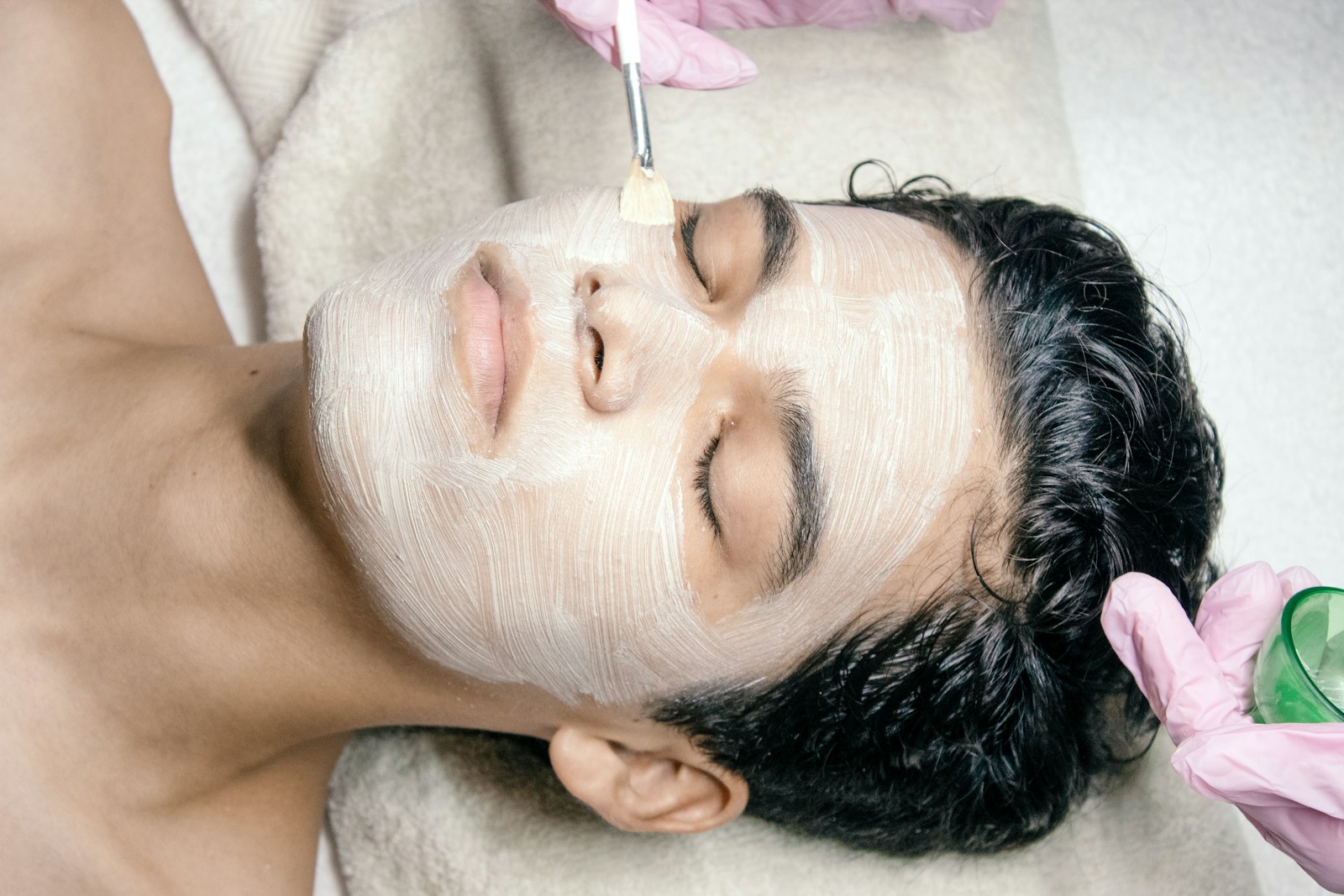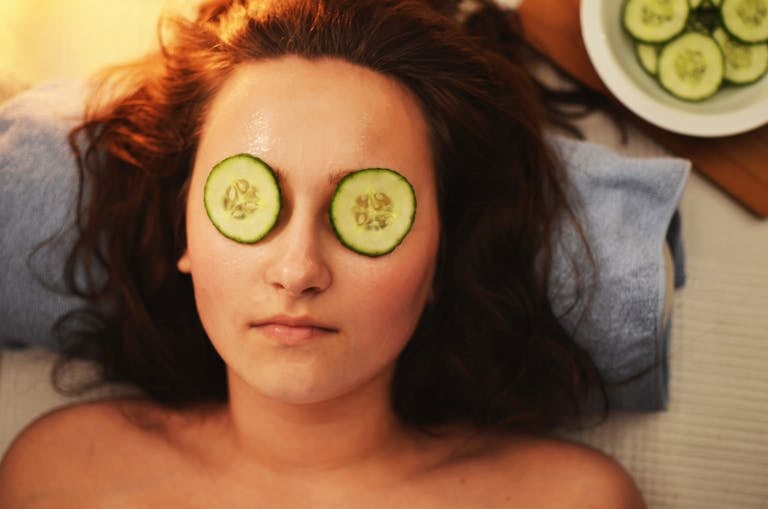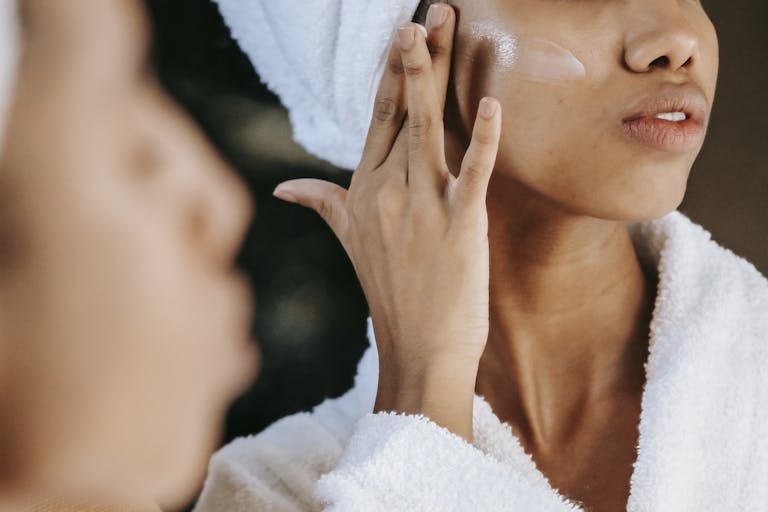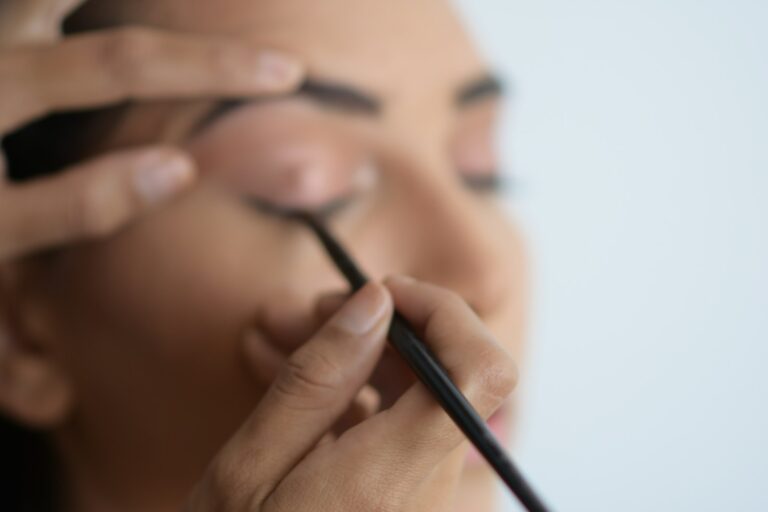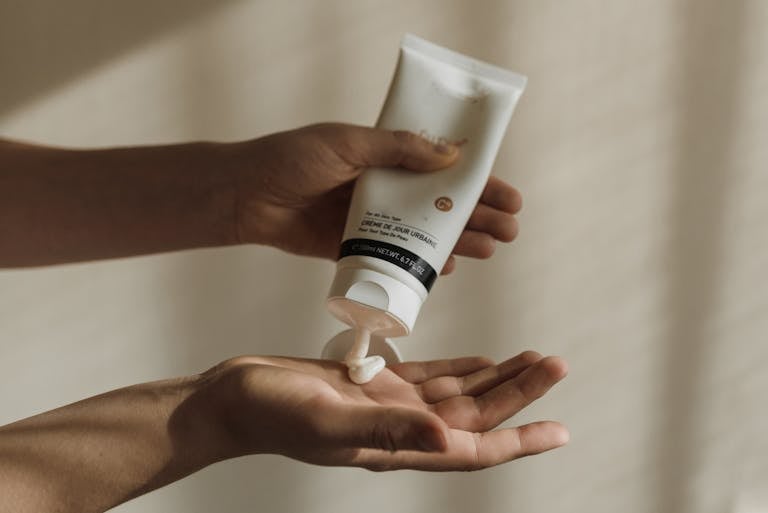Your skincare routine is a systematic approach to maintaining the health and appearance of your skin. By establishing a consistent regimen, you can address specific skin concerns, such as acne, dryness, or aging, while also protecting your skin from environmental damage. A well-designed skincare routine not only enhances your complexion but also promotes overall skin health, leading to a brighter and more youthful appearance. Understanding the necessary components of a skincare routine is key to achieving and maintaining your desired skin goals.
The Building Blocks of a Skincare Routine
Identifying Your Skin Type
Understanding your skin type is fundamental to developing an effective skincare routine. Your skin may fall into one of several categories: oily, dry, combination, sensitive, or normal. Oily skin typically appears shiny and can be prone to acne due to excess sebum production. In contrast, dry skin lacks moisture and may appear flaky or dull, leading to discomfort. Combination skin features both oily and dry areas, most commonly seen in the T-zone while the cheeks remain dry. Sensitive skin is reactive and might exhibit redness or irritation, while normal skin shows balanced characteristics across the board. Take some time to assess your skin’s behavior through various seasons; this self-awareness will lay the foundation for tailored skincare products.
To identify your skin type accurately, you can perform a simple blotting test. After cleansing your face, wait an hour without applying any products. Take a blotting paper and gently press it on different areas of your face. If the paper absorbs oil from all areas, you likely have oily skin; if it retains little to no oil, your skin may be dry. If it absorbs oil from the T-zone but appears dry elsewhere, you fall into the combination category. This knowledge arms you with the insight needed to choose products that synergistically support your skin’s unique needs.
Key Ingredients for Different Needs
Once you have determined your skin type, focusing on key ingredients that address your particular needs becomes vital. Each ingredient carries distinct benefits; for example, those with oily skin may benefit from salicylic acid, which helps unclog pores and reduce excess oil. Alternatively, hyaluronic acid is a superstar for dry skin, attracting moisture to the skin and enhancing hydration levels. For combination skin, a lightweight moisturizer with both humectants and emollients offers the right balance, while retinol can effectively target signs of aging across various skin types without overwhelming them.
Additionally, antioxidant-rich ingredients like vitamin C can help brighten your skin tone and combat free radical damage, making them ideal for anyone looking to enhance their skin’s appearance. It’s advisable to dive deeper into the purpose of each ingredient when customizing your routine. Your specific skin concerns—whether it be acne, aging, dryness, or sensitivity—should guide your choices and lead your research towards suitable solutions.
The Importance of Product Selection
Choosing the right products for your skincare routine can profoundly affect how your skin looks and feels. Rather than relying solely on popular trends or endorsements from influencers, prioritize the needs dictated by your skin type and concerns. Generally, shelling out on high-end products isn’t always the solution; equally, skincare newcomers may not recognize that drugstore brands often contain similar effective ingredients at a fraction of the price. Critical factors include checking for any potential allergens or irritants that may exacerbate pre-existing skin issues.
Incorporating products with proven efficacy can mean the difference between improving your skin’s health and causing more harm. For instance, if you have sensitive skin, you should steer clear of harsh exfoliants or products laden with artificial fragrances. The synergy between your chosen products can either enhance or hinder their effectiveness; for example, layering certain actives like retinol and vitamin C may lead to irritation. By taking the time to select appropriate items tailored specifically to your skin’s needs, you establish a routine that not only feels good but also looks good, enhancing both your confidence and your complexion.
The Daily Ritual: Steps to a Balanced Skincare Regimen
Morning Essentials: The Start of Your Day
Your morning skincare routine sets the tone for your day, and it begins with cleansing. A gentle cleanser suited for your skin type washes away overnight sweat and oils, preparing your skin to absorb the next steps effectively. Following cleansing, applying a toner can balance your skin’s pH and tighten those pores, giving you a fresh, radiant appearance. Toners infused with natural ingredients like green tea or witch hazel can soothe your skin without over-drying it.
Next comes moisturizer, an important step to keep your skin hydrate. Even if you have oily skin, a lightweight, non-comedogenic moisturizer can help maintain your skin’s moisture balance. Topping off your routine with sunscreen, ideally with at least SPF 30, protects your skin from harmful UV rays. This step cannot be overstated; consistent sun protection drastically reduces the risk of premature aging and skin cancers.
Evening Rituals: Unwinding and Repairing
As the day comes to a close, your evening skincare routine becomes a ritual of renewal. After a long day, start by thoroughly cleansing your skin to remove makeup, sweat, and pollutants accumulated throughout the day. A double cleansing method, using an oil-based cleanser followed by a water-based one, can provide a deeper clean. This step is vital for preventing pores from clogging and ensuring that your skin can heal effectively overnight.
Adding a treatment step, such as a serum rich in antioxidants or retinol, can significantly enhance your skin’s overnight repair process. Serums typically contain concentrated active ingredients that target specific skin concerns like aging or dark spots. Concluding with a rich night cream completes your routine, locking in moisture and allowing your skin to rejuvenate as you sleep.
Integrating a weekly treatment, such as an exfoliating mask or hydrating sheet mask, into your evening rituals offers additional benefits. These treatments provide deeper insights into your skin’s needs, responding to seasonal changes, and addressing any specific issues you may be facing. Consistent nighttime care not only helps repair the day’s damage but also prepares your skin for a bright and refreshed morning glow.
The Role of Consistency in Achieving Results
Short-Term vs. Long-Term Benefits
Consistency in your skincare routine yields both short-term and long-term benefits, each playing a significant role in the overall health of your skin. In the short term, regular use of products can lead to visible improvements such as increased hydration, reduced redness, and a more radiant complexion. For instance, a hydrating serum can plump your skin and provide immediate moisture, while exfoliating products might reveal a smoother surface after just one application. These quick wins boost your confidence and motivate you to stick with your routine.
Long-term benefits are where the real transformative results occur. Over time, consistent use of targeted treatments can significantly reduce signs of aging, fade pigmentation, and improve skin texture. For example, regular application of a retinol-based product typically shows impressive results after several weeks, smoothing fine lines and promoting cell turnover. Adopting a routine that you follow diligently empowers your skin to regenerate and recover, creating a foundation of health that radiates over the years.
Tracking Progress and Making Adjustments
To really benefit from your skincare regimen, tracking your progress is crucial. This can be as simple as keeping a journal of your skin’s condition, noting changes to your complexion, sensitivity, or texture after starting or altering a product. Photographic evidence can also clarify these shifts. Taking before-and-after photos every few weeks reveals progress that might not be as apparent day-to-day. Observing trends over time enables you to identify what works and what doesn’t, allowing for informed adjustments when necessary.
Evaluating your routine regularly helps you adapt to your skin’s evolving needs. As factors such as seasons, diet, and hormonal changes influence your skin’s behavior, adjusting product choices becomes vital. For instance, you may find that a lightweight moisturizer suffices in summer, but your skin craves something richer during winter. Balancing these adaptations with a consistent regimen ensures your skin remains optimally cared for, maximizing the results of your hard work.
Staying attuned to these shifts will help you continually refine your skincare routine, enhancing your understanding of how your skin responds to various products. Choosing the right ingredients and recognizing when to fade out non-performing products allows you to tailor your approach, ensuring optimal health and vitality. This dynamic tracking mechanism not only fosters your skin’s resilience but also empowers you, making your relationship with skincare proactive rather than reactive.
Common Pitfalls: Mistakes That Sabotage Your Skin
Over-Exfoliation and Product Overload
Exfoliation can be a double-edged sword. While it helps to remove dead skin cells and promote better skin texture, over-exfoliating can lead to irritation, redness, and even increased oil production in your skin. A common mistake is using multiple exfoliating products, such as scrubs, chemical peels, and exfoliating toners all in one routine. This not only overwhelms your skin but also disrupts its natural barrier, leading to sensitivity. You’re better off limiting exfoliation to 1-3 times a week, depending on your skin’s tolerance.
Similarly, product overload can overwhelm your skin and your daily routine. Using too many active ingredients at once—like combining retinol, vitamin C, and acids—can aggravate your skin, leading to breakouts and dullness. Instead, focus on the core products that serve your skin’s primary needs and introduce new items one at a time to observe how your skin reacts. This approach allows you to customize your routine while minimizing the risk of adverse effects.
Ignoring Sunscreen and SPF Efficacy
Sunscreen is often the most overlooked component of a skincare routine, yet it plays a pivotal role in long-term skin health. When you forgo sunscreen, you expose your skin to the damaging effects of UV rays, which can lead to premature aging and increase the risk of skin cancer. Studies show that up to 90% of visible skin aging is caused by UV exposure. A broad-spectrum SPF of at least 30 should be a non-negotiable part of your daily routine, even on cloudy days when UV rays can still penetrate. Applying sunscreen liberally and frequently will dramatically enhance the efficacy of your skincare regimen.
Furthermore, SPF efficacy isn’t just about selecting the right product; application methods matter as well. For optimal protection, applying sunscreen 15 minutes before sun exposure and reapplying every two hours is necessary. Paying attention to expiration dates is equally important, as expired sunscreens may lose their effectiveness, leaving your skin vulnerable to harmful rays. Consistently using sunscreen can be one of the simplest yet most effective ways to ensure your skin remains healthy and youthful for years to come.
Tailoring Your Routine for Seasonal Changes
Addressing Climate Effects on Skin Health
Seasonal changes significantly affect your skin’s health, influenced largely by the climate you experience. In winter, low humidity and indoor heating tend to dry out your skin, leading to flakiness and irritation. The key may lie in integrating more hydrating products like humectants—ingredients that draw moisture into the skin, such as hyaluronic acid or glycerin. On the flip side, summer brings increased humidity but also potential for sun damage and breakouts. During these months, lightweight, non-comedogenic products can help keep your complexion balanced while also providing hydration.
Paying close attention to your skin’s response to these climate shifts can lead you to make informed choices about your routine. For instance, if you notice a dull complexion or feel tightness in the winter, incorporating a rich moisturizer or nourishing facial oils can support your skin’s barrier function. Conversely, during the summer, a focus on cleansing, exfoliating, and applying broad-spectrum sunscreen protects against UV damage and helps manage excess sebum production.
Adapting Product Use for Different Weather
Adjusting the specific products you use throughout the year can make a noticeable difference in how your skin behaves. In colder months, consider switching to a thicker, creamier moisturizer that offers long-lasting hydration, while reserving your lightweight gels or lotions for the warmer months. A solid routine might include adding a hydrating serum in winter, while you might prioritize using a mattifying toner or gel during the hotter months when excess oil can be an issue.
Taking advantage of seasonal considerations allows you not only to maintain your skin’s health but also to enhance its natural glow. For instance, summer might be the ideal time to introduce a chemical exfoliant to remove dead skin cells without adding heaviness to your routine, while winter can benefit from a deeper, exfoliating mask to reveal freshness beneath dry, lackluster layers. Tailoring your product use ensures your skin can adapt effectively to changing environments, ultimately achieving a radiant complexion year-round.
The Psychological Impact of a Skincare Routine
Building Confidence Through Self-Care
Your skin often serves as a reflection of your overall wellbeing, and a well-executed skincare routine can play a significant role in boosting your self-esteem. The act of dedicating time to care for your skin transforms an everyday task into a form of self-affirmation. By consistently investing in your appearance and nurturing your skin, you send a powerful message to yourself: you are deserving of care and attention. This can lead to heightened levels of confidence, readying you to embrace both personal and professional interactions with poise.
Research has shown that individuals who engage in self-care rituals report feeling more empowered and in control of their lives. Your skincare routine can serve as an anchor, especially during stressful moments, reminding you of your commitment to self-improvement. As you witness visible changes in your skin’s texture and tone, your newfound confidence can radiate into other aspects of your life, from social connections to career opportunities.
The Therapeutic Benefits of Ritual Practices
Rituals have a unique ability to create a sense of calm and clarity. By integrating a skincare routine into your daily life, you engage in a mindful practice that encourages relaxation and reduces stress. Taking the time to cleanse, exfoliate, and moisturize allows you to slow down and connect with your body, enhancing your overall mental health. This mindfulness can serve as a form of meditation, giving you a designated time each day to unwind and reflect.
Moreover, studies indicate that engaging in repetitive, structured activities has been associated with lower levels of anxiety and improved mood. The predictability of your skincare routine, from selecting your products to applying them, creates a comforting structure in your day. It’s a simple yet effective way to incorporate a wellness practice that reinforces emotional stability, ultimately leading to a more balanced life.
Expert Insights: Dermatologists Weigh In
What Professionals Recommend
Dermatologists emphasize that a solid skincare routine is foundational for maintaining optimal skin health. They consistently advocate for a regimen that includes the crucials: a gentle cleanser, a hydrating moisturizer, and broad-spectrum sunscreen. According to Dr. Dendy Engelman, a board-certified dermatologist, “Daily sunscreen use can prevent sun damage, which is a significant contributor to skin aging.” She points out that even on cloudy days, UV rays can affect your skin, making daily application non-negotiable for everyone, regardless of skin type. Additionally, incorporating active ingredients like vitamin C for brightening or retinoids for anti-aging can significantly enhance the effectiveness of your routine, depending on your skin’s needs.
Another important aspect highlighted by experts is the need to adjust your routine based on skin type and concerns. For instance, Dr. Shereene Idriss, a dermatologist known for her work in personalized skincare, notes that “what works for oily skin may not be ideal for dry skin.” If your skin is prone to breakouts, look for non-comedogenic products. If you are dealing with signs of aging, peptides and antioxidants can play a role in your skincare arsenal. Tailoring products to your unique skin profile is one way to optimize results.
Emerging Trends in Skincare
Current trends in skincare reflect a growing emphasis on holistic and personalized approaches. The rise of clean beauty is indicative of consumers’ desire for safe, non-toxic ingredients in their products. You may find brands increasingly focusing on sustainability and transparency in their formulations, aligning with your values and desire to make responsible choices. Furthermore, technology is also at the forefront, with innovations such as personalized skincare analysis apps that offer tailored product recommendations based on your skin type, conditions, and lifestyle.
Among the latest trends, skin microbiome health is gaining traction, suggesting that nourishing your skin’s natural flora can lead to improved overall skin function. Brands are now integrating prebiotics and probiotics into their formulations to promote a balanced and healthy complexion. With ongoing research showcasing the correlation between a healthy microbiome and skin clarity, this trend could define the next evolution in skincare science.
Accessibility in Skincare: Finding What Works for Everyone
Access to effective skincare should not be a privilege restricted to those who can afford high-end products. An understanding of budget constraints can help you navigate the vast landscape of the industry. Many people assume that price equates to quality, but that’s not always the case. With brands like Neutrogena and CeraVe offering dermatologist-tested formulas at drugstore prices, you can achieve great results without breaking the bank. It’s worth exploring different options that fit your financial situation while still delivering the benefits your skin requires.
Budgeting for Skincare: Luxury vs. Drugstore
Luxury skincare brands often entice you with high-end formulas, lavish packaging, and celebrity endorsements. However, products priced upwards of $100 don’t always guarantee better results. While premium brands may utilize unique ingredients or advanced technologies, many drugstore brands consistently receive rave reviews for their effectiveness in targeting common skin concerns like acne, dryness, and aging. For example, La Roche-Posay offers a range of products that balance quality and affordability, making it easier for you to cater to your skin’s needs without straining your wallet.
By embracing a *mix-and-match* approach, you have the freedom to curate a personalized skincare routine that blends both luxury and drugstore options. Investing in more costly treatments like serums or moisturizers can be justified if they truly offer exceptional benefits, while still allowing for budget-friendly options in your daily regimen.
The Rise of Inclusive Brands
The skincare industry is evolving to embrace diversity and inclusion—a shift that makes a significant difference for many consumers. Brands like Fenty Skin and The Ordinary are leading the charge by offering products specifically designed for a wide range of skin tones and types. This inclusivity extends beyond mere marketing slogans; these brands develop formulations that genuinely address varying concerns of all skin types. For instance, Fenty Skin not only provides customizable coverage options, but also prioritizes clean ingredients, appealing to those concerned about environmental impacts.
Inclusivity in skincare goes beyond just offering a variety of shades; it’s about recognizing and addressing the unique needs of different demographics. Brands are now taking steps to ensure that people of color, those with sensitive skin, and individuals from underrepresented groups are well-represented in product offerings. With increased awareness and dedicated research into the science behind diverse skin types, you can now shop with confidence, knowing that there are products thoughtfully formulated just for you.
Final Words
Following this understanding of what a skincare routine entails, it’s important to recognize that such a regimen tailors to your unique skin needs and goals. Taking time to assess your skin type and conditions allows you to choose the right products and techniques that can enhance your complexion, promote overall skin health, and even boost your confidence. Regularly practicing your skincare routine not only addresses immediate concerns but also establishes a foundation for long-term skin vitality and resilience.
Moreover, your skincare routine is more than just applying creams and serums; it’s a form of self-care that can contribute positively to your mental well-being. Engaging in rituals that nourish your skin helps create a moment of mindfulness in your busy day, serving as a reminder to prioritize your personal health and wellness. By committing to a skincare routine, you empower yourself to cultivate and maintain beautiful, healthy skin that reflects your inner vitality.

